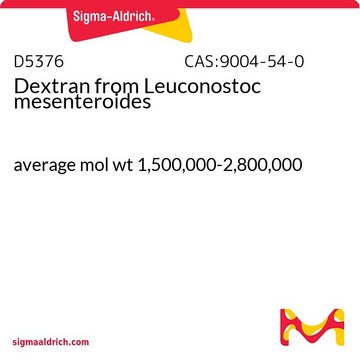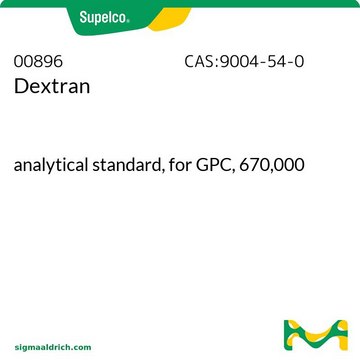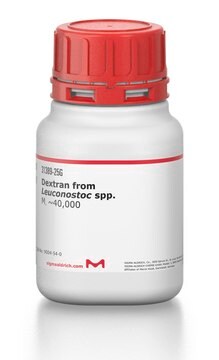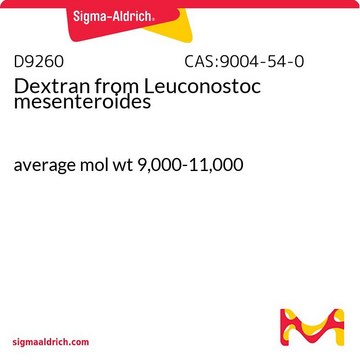31425
Dextrana
analytical standard, for GPC, Mw 670,000
About This Item
Produtos recomendados
grau
analytical standard
for GPC
Nível de qualidade
peso molecular
Mn ~330,000
Mp ~400,000
Mw ~670,000
classe(s) química(is) do analito
oligosaccharides
técnica(s)
gel permeation chromatography (GPC): suitable
Mw/Mn
~2.03
aplicação(ões)
food and beverages
formato
neat
InChI
1S/C18H32O16/c19-1-5(21)9(23)10(24)6(22)3-31-17-16(30)14(28)12(26)8(34-17)4-32-18-15(29)13(27)11(25)7(2-20)33-18/h1,5-18,20-30H,2-4H2
chave InChI
FZWBNHMXJMCXLU-UHFFFAOYSA-N
Procurando produtos similares? Visita Guia de comparação de produtos
Descrição geral
Dextran from Leuconostoc mesenteroides (Mw: 670,000) may be used as an analytical standard to calibrate the column for gel permeation chromatography (GPC).
Aplicação
Código de classe de armazenamento
11 - Combustible Solids
Classe de risco de água (WGK)
WGK 2
Ponto de fulgor (°F)
Not applicable
Ponto de fulgor (°C)
Not applicable
Equipamento de proteção individual
Eyeshields, Gloves, type N95 (US)
Certificados de análise (COA)
Busque Certificados de análise (COA) digitando o Número do Lote do produto. Os números de lote e remessa podem ser encontrados no rótulo de um produto após a palavra “Lot” ou “Batch”.
Já possui este produto?
Encontre a documentação dos produtos que você adquiriu recentemente na biblioteca de documentos.
Os clientes também visualizaram
Nossa equipe de cientistas tem experiência em todas as áreas de pesquisa, incluindo Life Sciences, ciência de materiais, síntese química, cromatografia, química analítica e muitas outras.
Entre em contato com a assistência técnica











